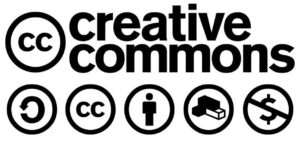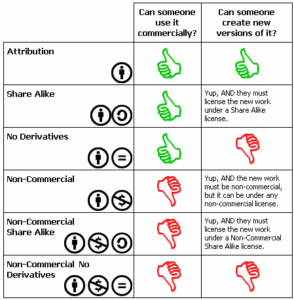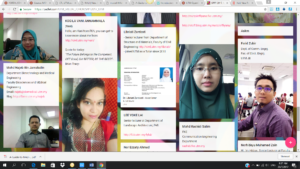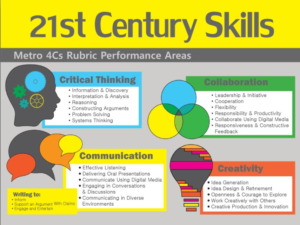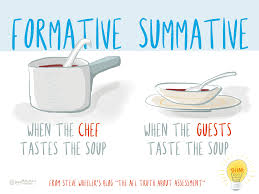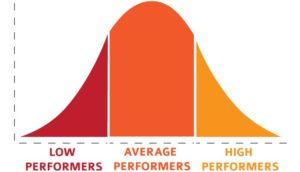Alhamdulillah, we have a wonderful session with Prof Madya Dr Ahmad Johari Sihes. From 215 pm to understand more about curriculum development at Dewan CTL UTM Johor Bahru.
Life Learning I learn from him today:
1. Don’t see others as unimportant’. Especially we as technology people vs social science people. I experienced these a lot of time. I took it as the different shool of thought. Hence it is not easy to change others’ mental model. So I just adjusting myself. But his advice is quite relevant – when us become the big people, don’t do these to other people.
- Don’t do syok sendiri research/curiculum – make sure do some needs analysis – then our curriculum will be more relevant since it must according to the analysis findings.
Academically, herewith is the key points he shared during the course.
Lecturer has 3P for curriculum design
- Perancang – merancang dan menyediakan kkurikulum
- Pelaksana – melaksankan kurikulum melalui pengajaran & pembelajaran
- Penilai – adakah kurikulum efektif? (pensyarah perlu nilai sendiri).
Proses Rancangan Pengajaran
- Kurikulum
- Silibus/maklumat kursus – gabungan ‘course outline’
- Rancangan Kerja
- Rancangan pengajaran
What is curriculum
Kurikulum bukan bermaksud untuk akademik sahaja tetapi meliputi design secara keseluruhan dengan tujuan utama untuk membangunkan modal insan. Design for Curriculum akademik adalah menyeluruh, berkos tinggi dan hidden curriculum sangat penting untuk membentuk spiritual modal insan yang lebih baik. Curriculum is not only in the classroom but overview the learning process in IPTA
Definisi kurikulum
- Currere (history from Latin word)
- a race course atau satu litar perlumbaaan.
- Untuk menamatkan satu litar perlumbaan, perlu ada banyak strategi untuk menang dalam satu perlumbaan.
- Satu rancangan pengajian
- ‘a plan of learning’ atau satu rancangan pembelajaran.
- Satu rancangan pendidikan yang dibentuk untuk suatu kumpulan pelajar bagi mencapai matlamat yang telah ditentukan.
- For UTM, kurikulum dirancang di setiap jabatan atau fakulti berdasarkan 1) falsafah dan matlamat Pendidikan negara di samping mengambilkira 2) falsafah, 3) visi 4) misi dan 5) matlamat IPT dan 6) fakulti berkenaan melalui program-program yang ditawarkan.
- Falsafah Pendidikan Negara (bermula tahun 1987)
Pendidikan adalah satu usaha berterusan (continuity dan perlu sentiasa tambah baik) kearah memperkembangkan lagi potensi individu (walaupun dia OKU) secara menyeluruhan dan bersepadu untuk mewujudkan insan yang seimbang dan harmonis dari segi intelek, rohani, emosi dan jasmani (JERI) berdasarkan kepercayaan dan kepatuhan kepada tuhan.
Hukum Allah adalah dasar kepada sains dan teknologi. Maka Universiti Teknologi Malaysia berusaha secara menyeuruh dan bersepadu memberkembangkan kecemerlangan sains dan teknologi untuk kesejahteraan dan kemakmuran sejagat sesuai dengan kehendaknya.
Diiktifat sebagai pusat kecermerlangan akademik dan teknologi bertaraf dunia (for 2017 they want to be top 50 with differentiation in kejuruteraan & technology)
PPPM(PT )
- Enhance quality education
- Promote excellence in research, innovation and graduate education
- Enhance professional training and lifelong learning – article review, pergi library, buat video, gambar (gambar dan video yang lebih konkrit) masa discussion/pergi library)
- Enhance international standing Strengthen community outreach
- Provide quality management and effective risk management in Malaysia Education Blueprint (ada 10 shift)
Kurikulum mesti mengandungi elements tersebut:
- Rancangan pendidikan
- Mengandungi matlamat dan objektif.
- Menyenaraikan kandungan, topik atau pengalaman pembelajaran
- Menentukan kaedah dan aktiviti.
- Menetapkan kaedah dan instrument yang perlu untuk menilai pencapaian matlamat dan objektif.

